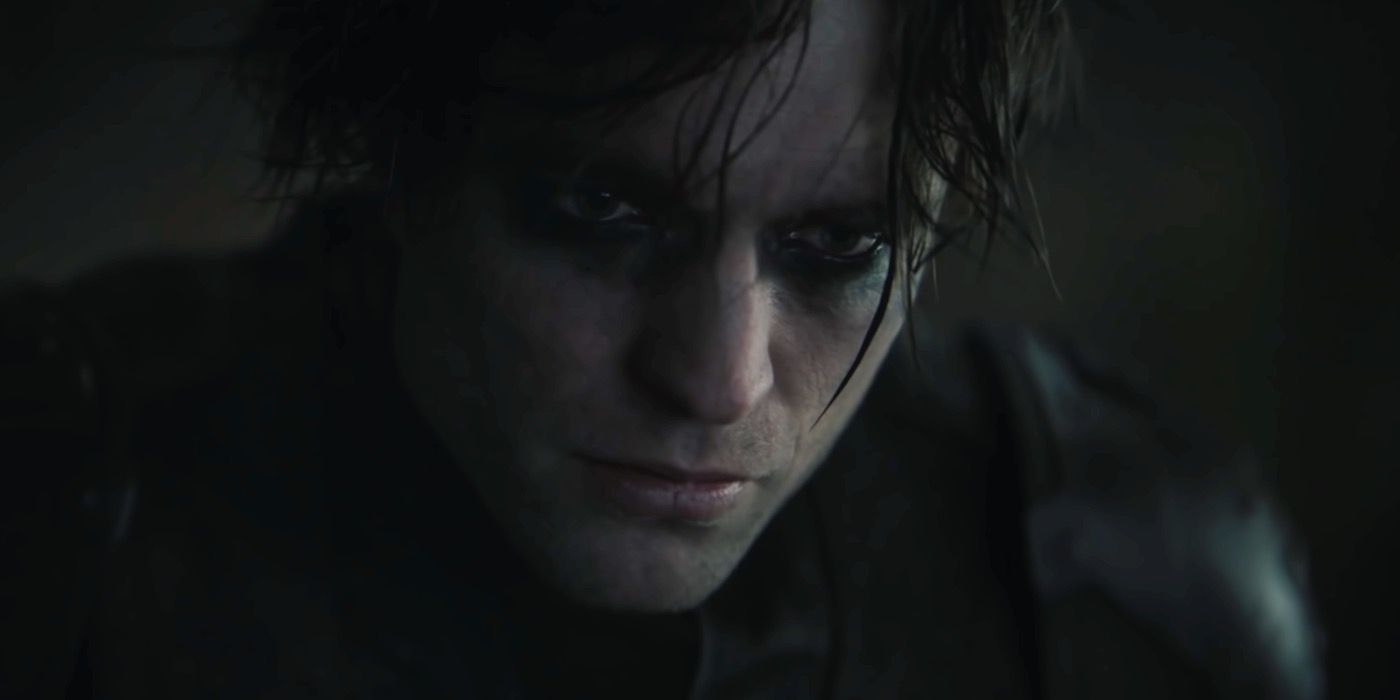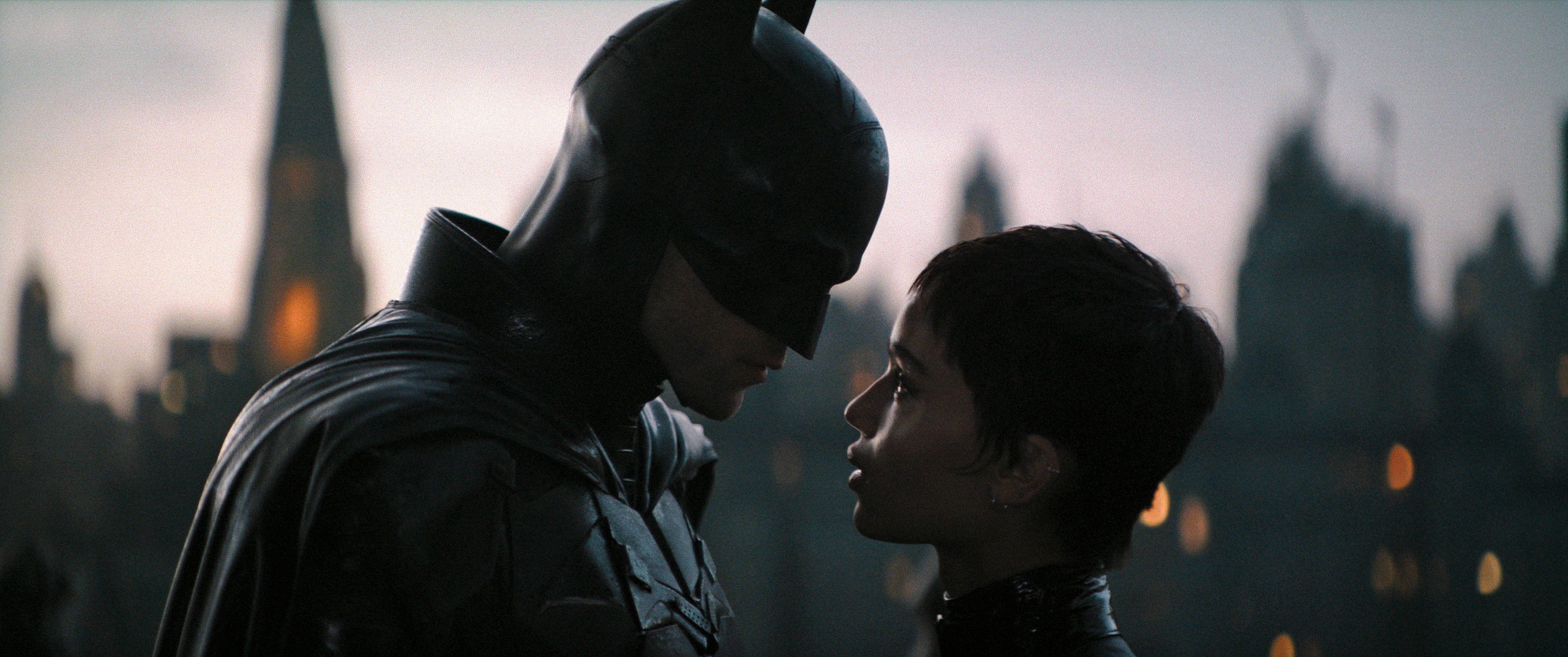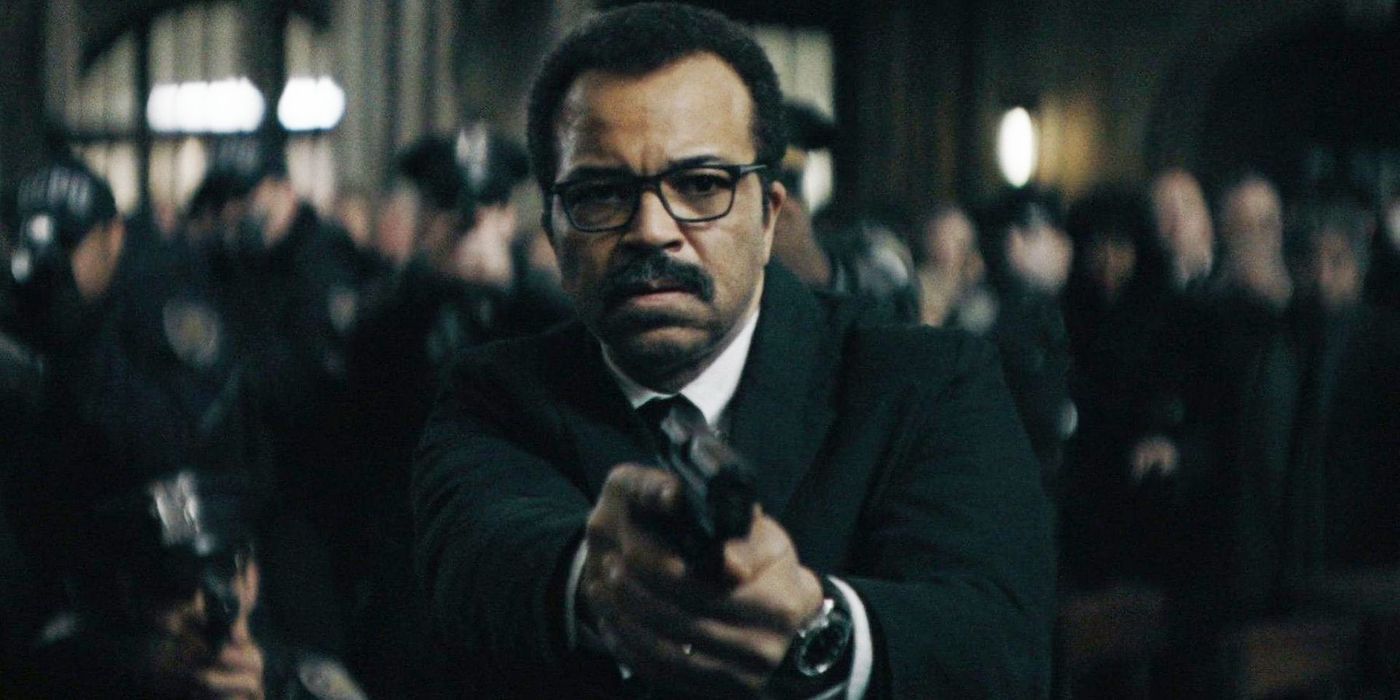Matt Reeves’ The Batman is one of those superhero movies that functions like a greatest hits from the comics, featuring numerous well-known and beloved (or despised) characters straight from the pages of the DC classic series. Villain-wise, the Riddler (Paul Dano) leads the way as the film’s main bad guy, striking fear into the hearts of Gotham’s rich and powerful with his own style of Zodiac-meets-Unabomber terrorism. But he’s not the only Batman (Robert Pattinson) villain to make an appearance in The Batman. Played by an unrecognizable Colin Farrell, the Penguin is also an important figure in Reeves’ universe, and even the Joker (Barry Keoghan) gets his moment under the limelight in the movie’s final scene. As for Batman’s allies, both Alfred (Andy Serkis) and Commissioner Gordon (Jeffrey Wright) — still a lieutenant at the time in which the movie is set — are around to make sure that Gotham’s favorite vigilante can make the most out of his crime fighting skills. Caught between both worlds, Catwoman (Zoë Kravitz) is another one of the plot’s key characters, even though under Reeves’ gritty lenses she’s usually referred to by her given name, Selina Kyle. However, there is one classic Batman character that is notably absent from The Batman, much to the detriment of the story: the billionaire behind the mask himself, Bruce Wayne.
Okay, maybe saying that Bruce Wayne is absent from The Batman is kind of an exaggeration. After all, Wayne and Batman are one and the same, so, unless you decide to go with any of the other Batman secret identities in your movie, there is no way of cutting Bruce Wayne from it. Besides, even if we consider the Batman and Wayne to be different characters, each with their own particular journey, Bruce does make a few appearances over the course of The Batman, and even before the movie was released on March 4, Pattinson’s “weirdo” reinterpretation of the character was already making some ripples online. Still, unlike other Batman films, The Batman spends very little time with the man behind the mask, with Reeves choosing to focus more on the titular hero than on Wayne. In many ways, this is a good choice: absolutely no one wants to watch Martha and Thomas Wayne being gunned down for the umpteenth time nor go over the particulars of how The Dark Knight came to be. We already know what happened there. But that doesn’t mean Bruce Wayne should be taken for granted. From the romance to the character development to the social criticism, relegating Bruce to the sidelines of a Batman movie has many unwanted consequences.
The most noticeable issue pertains to the viewers’ suspension of disbelief regarding Batman’s secret identity. There’s a reason most Batman movies, from Tim Burton’s 1989 Batman to Christopher Nolan’s Dark Knight Trilogy, devote considerable screen time to the man behind the mask. Even if Batman isn’t the superhero with the most appallingly obvious secret identity — he wears a full face mask, unlike Superman, who only wears his Krypton-given face — there is still a need to show how Bruce’s playboy persona conflicts with the image of the brooding goth paladin. The hedonistic billionaire is just as much Wayne’s creation as the bat-dressed vigilante that roams the streets of Gotham at night. Both identities were carefully crafted to keep them apart from one another in the public eye. Devoting screen time to Bruce Wayne helps us understand how this differentiation works and accept with no questions asked that the people of Gotham have no idea who the Batman is.
In Matt Reeves’ movie, on the other hand, Bruce Wayne isn’t a bon vivant, but, as previously stated, a weirdo. Pattinson’s version of the character is a brooding, emo recluse that is only above suspicion because the evil-doers of Gotham believe him to be too much of a wimp to be a crime fighter. For the viewers, this is kind of a tough sell. Though there’s nothing wrong in reimagining Bruce Wayne as a lonely doomer, per se, but there needs to be some exploration of the character in order to keep his image separate from that of Batman. Otherwise, it becomes hard to believe that the denizens of Gotham would never guess that the local sad boy billionaire and the black-clad vigilante fighting crime with a million dollars worth of paraphernalia are the same person, no matter how much of a coward Wayne seems to be.
Another tough sell that stems directly from The Batman’s lack of Bruce is his romance with Selina. The second most important plot of the entire film, the love affair between “the Bat and the Cat,” as Selina puts it, feels contrived. Granted, Kravitz and Pattinson are two incredibly alluring people, and it’s not hard to understand why they feel so physically attracted to one another, even with their masks on. But there’s a world of difference between physical attraction and actual love or even infatuation. In order to establish a romantic relationship between two characters, it is necessary to show them learning to care for each other, and sharing bits of their personalities and life stories in ways that make them worthy of fans’ emotional investment. None of this happens in The Batman — at least, not when it comes to Bruce. Though Selina does share a bit of herself with the mysterious vigilante, telling him about her wish to leave Gotham and her relationship with mob boss Carmine Falcone (John Tuturro), Wayne never gives her anything. Throughout most of the movie, she is merely a prop for him to further his investigation. However, even after the romance is solidified, it is only through the Batman persona that Bruce interacts with Selina. Sure, one can argue that Bruce Wayne can’t just go around taking his mask off for every beautiful woman he meets, but he doesn’t have to: there’s a lot of personality that can be shown without ever giving away Batman’s true identity. Just one scene of him actually bonding with Selina instead of simply plotting with her would already go a long way.
But while were on the topic of the mask, there’s only so much an actor can do with his face covered, and his body movements limited by an armor. Though Selina Kyle’s attraction to Batman is made obvious by Zoë Kravitz facial expressions and body language, Robert Pattinson doesn’t get the same chance to show his character’s emotions through physicality. It’s a pity: as demonstrated by his work in The Twilight Saga, Pattinson sells “sad and horny” like no other actor of his generation. The scene in which he watches Selina through the eye camera is one of the few in which we get a tiny spark of desire coming from Bruce Wayne. In this scene alone, Pattinson’s face tells a story of lust, confusion, and anger that should have been told over at least half of the film’s two hours and 56 minutes of runtime instead of contained to just a few seconds.
It could also be extremely productive for the film if Selina had a chance to interact with a mask-less Bruce. As it is, not only is it hard to understand why she would feel anything besides a physical pull toward him, her character also lacks room for growth. When Selina first appears in The Batman, she has very crystallized ideas about class, goodness, and power. There is no room for nuance in her way of thinking: if you have money, you are evil, and even though Selina isn’t murder-happy like the Riddler, she’s also not shy about sharing her low opinion on his victims, Bruce Wayne included. Having her find out about Batman’s secret identity would be a nice way of challenging her worldview and making her realize that the problem doesn’t lie on the individuals, but on the system. Unfortunately, she remains unchallenged and unchanged. Her journey from point A to point B ends with her being the exact same person she was when the movie began.
The same thing can be said about Bruce Wayne himself. For a while, Reeves makes it look like he’s going to give his protagonist an internal obstacle that he has to overcome in order to grow as a character. This obstacle comes in the form of the revelation that Bruce’s father had dealings with Falcone and might have been behind the murder of a journalist. Bruce is distraught by the discovery, but his disappointment in his dad doesn’t last long. Alfred quickly reassures him that Thomas Wayne (Luke Roberts) was one of the good guys and had merely vented to Falcone about how much of a nuisance the reporter was on his mayoral campaign. Though there is something to be criticized in making Thomas Wayne naive to the point of believing that he could just go, as a politician, to the local Don Corleone to complain about a journalistic investigation and not expect this to be taken as a request for violence, this is not the issue we want to highlight here. The real problem is that we don’t spend enough time with Wayne wallowing in self-doubt for the revelation to matter. There is just one scene of Bruce entering his parents’ old bedroom and looking at a childhood drawing of his family before we’re back to business as usual.
The only character that undergoes any kind of transformation over the course of The Batman is Jim Gordon. Before the Riddler commences his series of attacks, it seems like Gordon legitimately believes his partners and allies on the side of law couldn’t be dirty. Much like the story of Thomas Wayne’s chat with Falcone, this is an odd display of naivety for characters in such a dark, grimy universe. And, alongside the Thomas Wayne story and Selina’s lack of political nuance, it emphasizes another issue that could have been averted with a little more Bruce action.
Matt Reeves’ movie is all about social criticism, with the director trying to make a point about how corruption is endemic to the politics and overall social structure of Gotham. However, this criticism often falls flat. Instead of allowing his characters to reexamine the world in which they live — of allowing Bruce to look at his father from a different perspective, of allowing Selina to challenge her preconceived notions, of allowing Gordon to question the institution he works for — Reeves quickly reverts to the “a few bad apples” mode. By making his characters end the movie exactly as they began, he invalidates any kind of deeper debate about structural issues. It’s not that there’s an established order that corrupts the good, it’s just that bad people exist. Likewise, it’s not that the real villain is a system that perpetuates wealth inequality, and not one individual rich guy, it’s just that Selina doesn’t know how great Bruce Wayne actually is. And you know what? Maybe she doesn’t. But how could she when Bruce Wayne wasn’t even there to begin with?


.jpeg)

